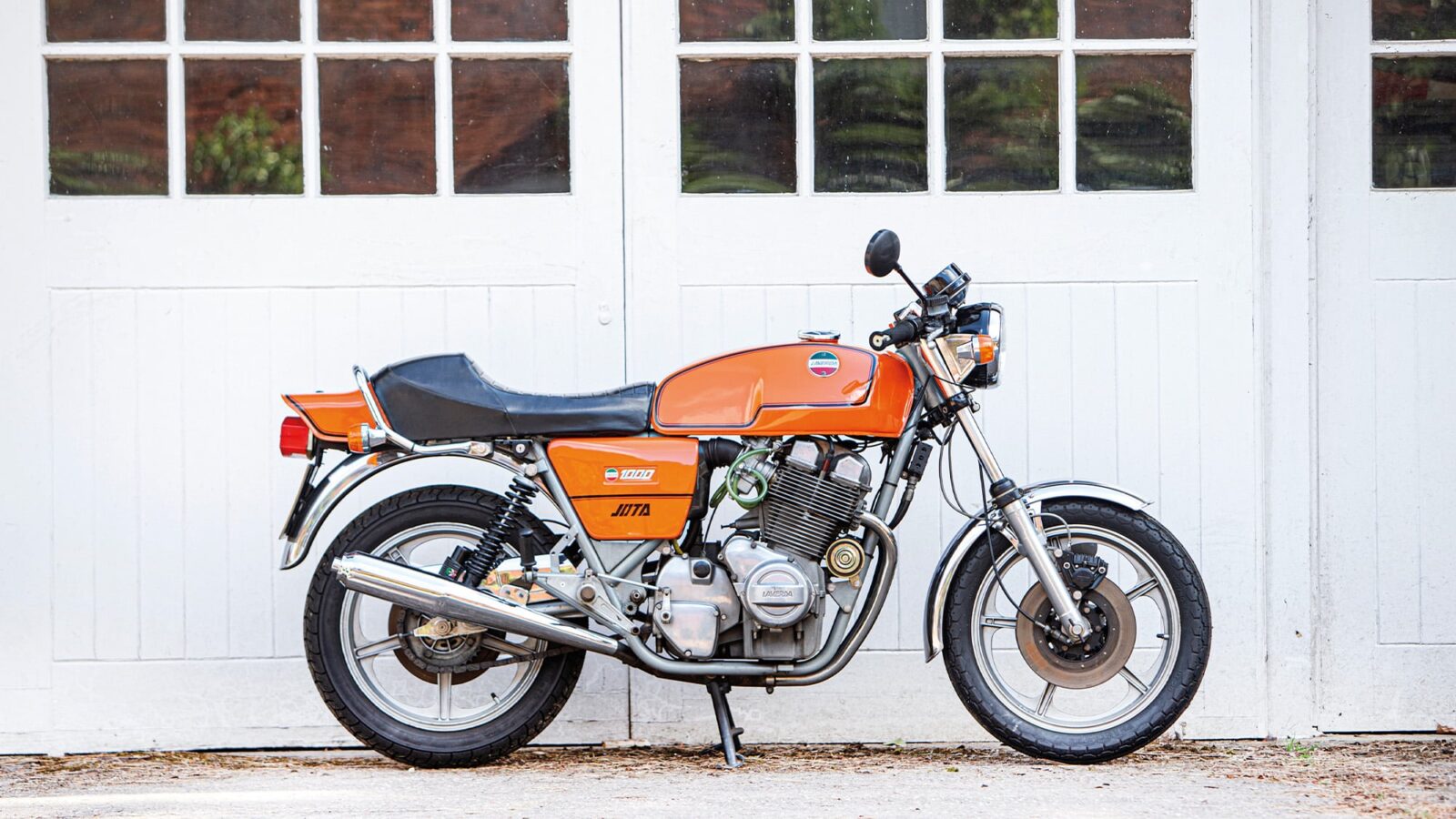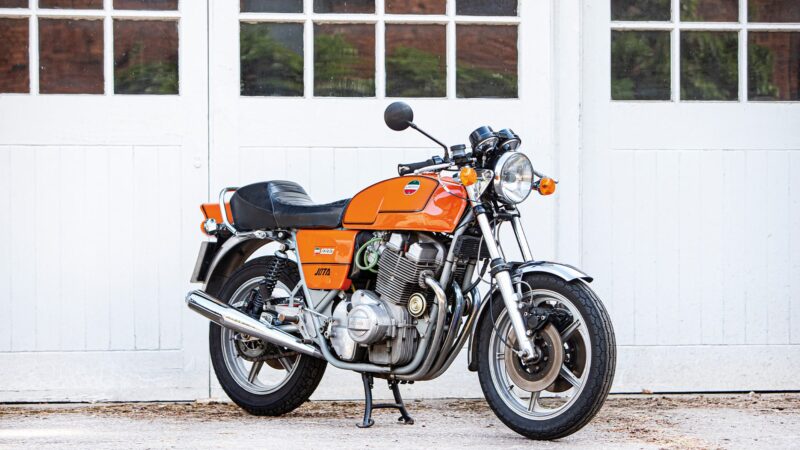1981 Laverda Jota 180: orange crush
The Slater brothers’ Laverda Jota was once the world’s fastest production bike. Simon de Burton dances to the beat of the beast

Humped seat, silver frame and the ultimate Jota hue
In 1976, Pete Davies won the Avon Roadrunner race series riding a bike that was virtually street-legal. The machine in question was the original Laverda Jota, a model developed by the Italian marque’s UK importers, Roger and Richard Slater.
The Jota was born out of the 981cc 3CL triple, the 1976 update of the 3C, which featured five-spoke cast wheels, three disc brakes and a neat glassfibre tailpiece. To it the Slater brothers added performance exhausts, rear-set footrests , less restrictive air filters and a close-ratio gearbox to create a brutal beast which made 90bhp at 7600rpm and offered a potential top speed of 140mph – so making it the quickest road bike of its day.
A jota is a Spanish dance accompanied by castanets in three-four time, and the name was chosen for the Italian triple in homage to the quirky arrangement of its crankshaft, which leaves the middle piston at top dead centre while the other two
are at the bottom. When a Jota is ‘on the cam’, the engine delivers an effortless flood of ultra-smooth power which, combined with characteristically nimble Italian handling and ultra-solid road holding, makes it a motorcycling delight.
It’s a different story in the cut and thrust of city commuter traffic, however, where a Jota will express its Italian temperament through its weighty clutch, a rough and reluctant idle, and a seat, centre of gravity and choice of gear ratios which are all too high for the urban jungle.

The pre-82 180-degree flat crank is the collector’s choice
But the gorgeous Jota was never meant for such a restrictive environment. Even at rest it needs space so admirers can stand back and appreciate the sculptural engine, the fine upswept silencers and the generally imposing appearance of the whole. Up close, riders who like to feel part of their machine appreciate the famous Laverda handlebars that can be altered from providing a full racing crouch to an upright touring position, the similarly adjustable footrests and the (optional) variable-length gear lever.
The model also came in several hues, but really the only true Jotas are those finished in Laverda racing orange with silver frames and selfish humped seats. Such as this excellent example on offer at Bonhams, which also has the favoured 180-degree engine rather than the later 120-degree unit that was introduced to make the bike smoother and more manageable in traffic.
Back in 1976 a new Jota cost around the £2000 mark, at least twice the price of a Japanese superbike. The best can now command £20,000, so if this one looks like selling within estimate, stick your hand up. You’ll be dancing for joy if you get it…
1981 Laverda Jota 180
On sale at Bonhams, December 11, Bicester
Estimate: £7000-£8500
